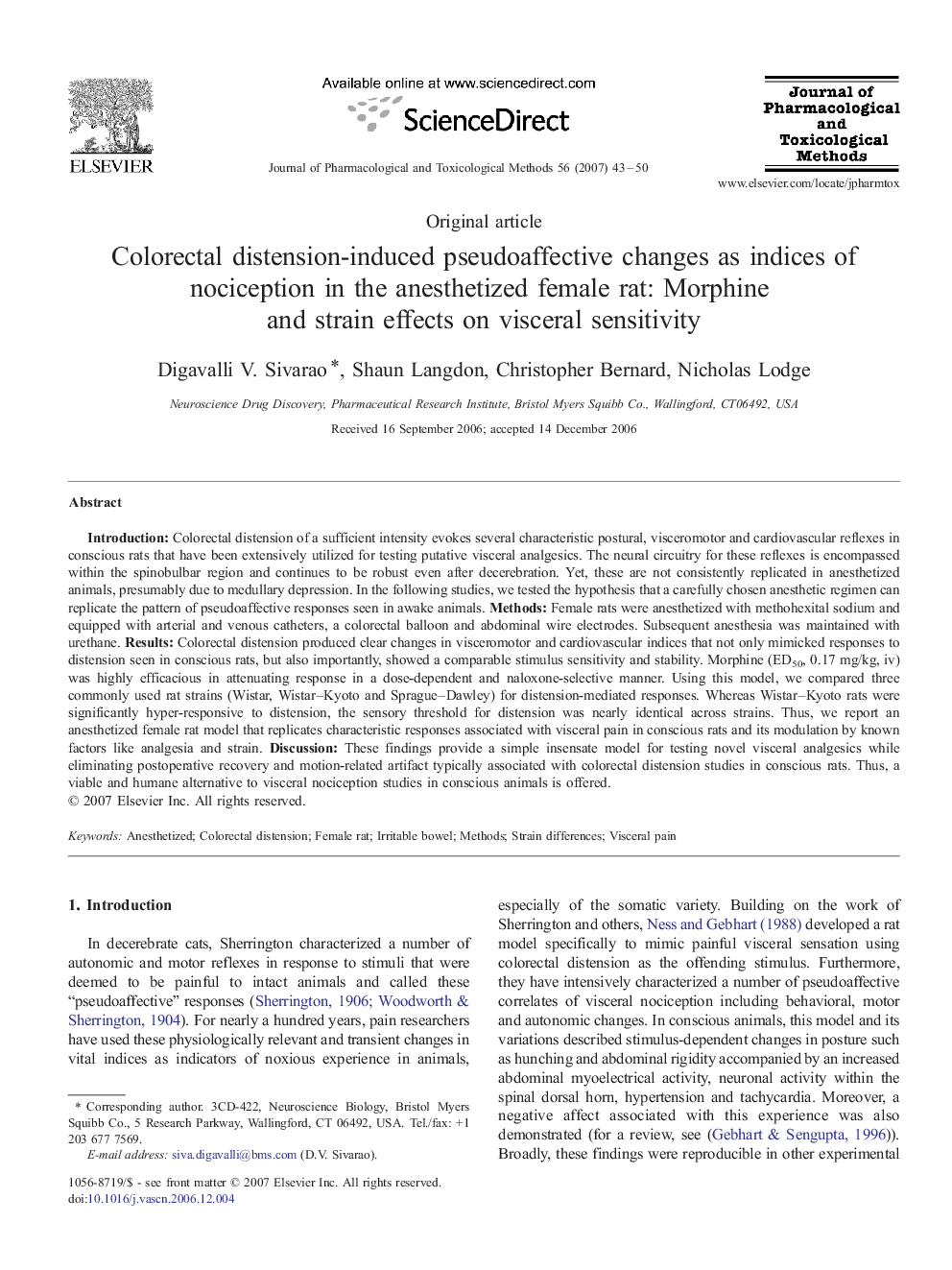| Article ID | Journal | Published Year | Pages | File Type |
|---|---|---|---|---|
| 2549933 | Journal of Pharmacological and Toxicological Methods | 2007 | 8 Pages |
IntroductionColorectal distension of a sufficient intensity evokes several characteristic postural, visceromotor and cardiovascular reflexes in conscious rats that have been extensively utilized for testing putative visceral analgesics. The neural circuitry for these reflexes is encompassed within the spinobulbar region and continues to be robust even after decerebration. Yet, these are not consistently replicated in anesthetized animals, presumably due to medullary depression. In the following studies, we tested the hypothesis that a carefully chosen anesthetic regimen can replicate the pattern of pseudoaffective responses seen in awake animals.MethodsFemale rats were anesthetized with methohexital sodium and equipped with arterial and venous catheters, a colorectal balloon and abdominal wire electrodes. Subsequent anesthesia was maintained with urethane.ResultsColorectal distension produced clear changes in visceromotor and cardiovascular indices that not only mimicked responses to distension seen in conscious rats, but also importantly, showed a comparable stimulus sensitivity and stability. Morphine (ED50, 0.17 mg/kg, iv) was highly efficacious in attenuating response in a dose-dependent and naloxone-selective manner. Using this model, we compared three commonly used rat strains (Wistar, Wistar–Kyoto and Sprague–Dawley) for distension-mediated responses. Whereas Wistar–Kyoto rats were significantly hyper-responsive to distension, the sensory threshold for distension was nearly identical across strains. Thus, we report an anesthetized female rat model that replicates characteristic responses associated with visceral pain in conscious rats and its modulation by known factors like analgesia and strain.DiscussionThese findings provide a simple insensate model for testing novel visceral analgesics while eliminating postoperative recovery and motion-related artifact typically associated with colorectal distension studies in conscious rats. Thus, a viable and humane alternative to visceral nociception studies in conscious animals is offered.
